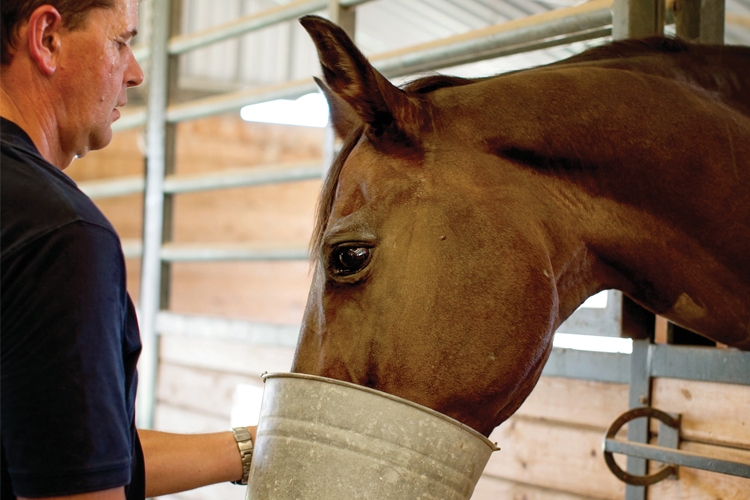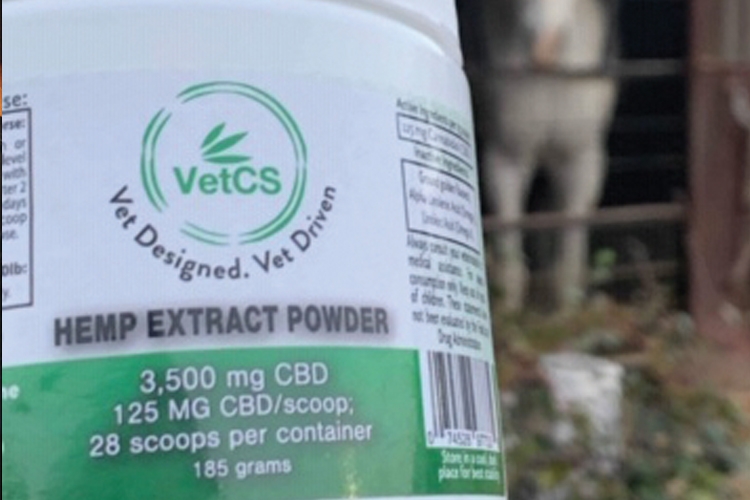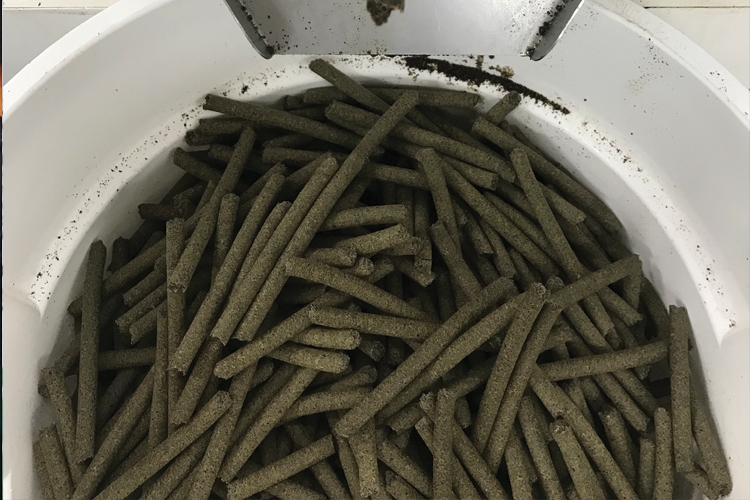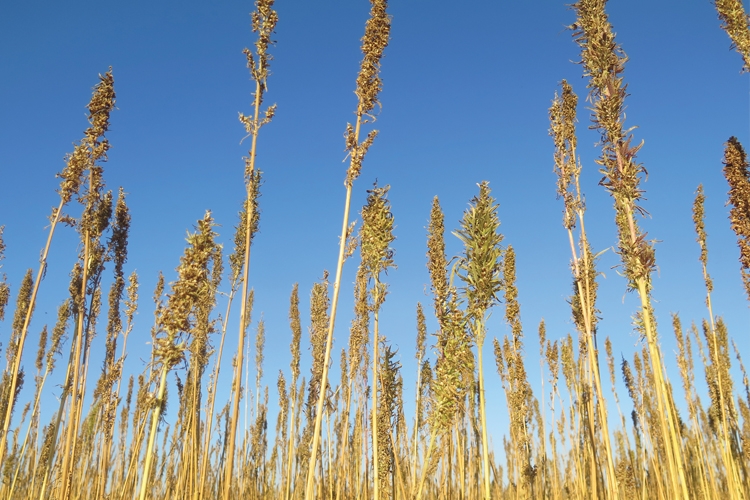
Cannabis Use in Horses
There are multiple species of Cannabis plants and several different “strains” within those species. Hemp includes varieties of Cannabis cultivated for production of fiber, seeds and their oils. Other varieties, often called marijuana, are used for medicinal purposes in humans and as a recreational drug.
Cannabis plants have more than 100 chemicals called phytocannabinoids (the prefix “phyto” means plant). The two main ones of interest today are cannabidiol (CBD) and tetrahydrocannabinol (THC). Industrial hemp products are made from plants selected to produce abundant fiber. Some strains are bred to produce minimal levels of tetrahydrocannabinol (THC), the main psychotropic constituent of cannabis. Marijuana’s THC content is usually 10% or more, and some marijuana plants today contain much more THC than they did several decades ago—sometimes as much as 25%, but hemp must have a THC content of 0.3% or less, according to federal and state laws. At this low level, cannabis products have no intoxicating effect, for people or animals.
Humans have been using cannabis for various purposes for many years, but because of the mind-altering effects of THC all forms of cannabis have been illegal in the U.S. until recently. With the Farm Act of 2018, industrial hemp (classified as having THC content of 0.3% or less) is no longer considered a controlled substance and is now a farm commodity, although THC remains a Schedule 1 drug with the Drug Enforcement Agency (DEA).
With this change in status, hemp is now utilized for many purposes including extraction of CBD for humans and animals. Pet owners and horsemen are using multiple products in a fast-growing market—for pain relief, calming and various medical conditions. Efficacy and safety of some of these products is questionable, however, because there has been very little research. Until passage of the 2018 Farm Act, it was illegal to possess or conduct research on hemp as well as marijuana.
CBD Products For Horses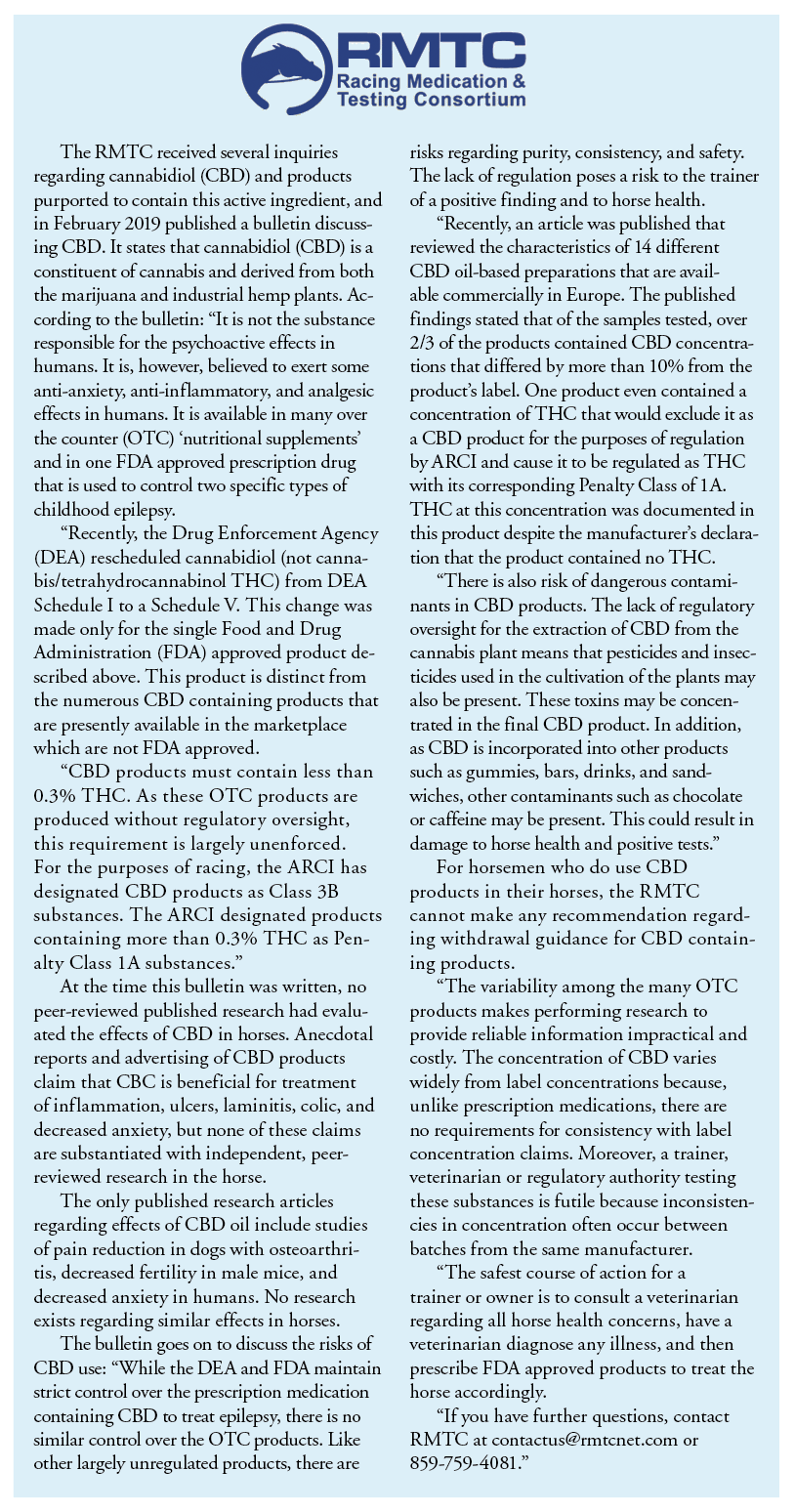
Today, research is trying to catch up and fill gaps in knowledge about potential uses for cannabis products in animals, efficacy, safety, dosage, etc. Several companies now sell CBD products for horses. For instance, Trish Wilhelm CVT, VCC, and Chelsea Luedke, DVM, MS, Co-Founder and Chief Veterinary Advisor of VetCS in Centennial Colorado, started their company two years ago. As an equine veterinarian, Luedke applies clinical experience to product development, manufacturing high-quality CBD hemp extracts for horses.
“We came to market with some products in 2018, with the purpose of creating a reliable solution for pet and horse owners,” says Luedke. “We’d seen a lack of scientific evidence in many products offered, and health benefit claims obviously overreaching any FDA standards. We wanted to address some of those problems, clarify information on dosing, and provide transparency regarding where ingredients come from.
“Many horse and pet owners were trying to adapt human products (either medical marijuana, or hemp they’d grown themselves to make homemade batches) for their animals,” she continued. “In dogs, for instance, they were using human CBD oils that contain xylitol (a sweetener), which is toxic for dogs. When horse owners started using hemp, many were under-dosing their horses with CBD.
“Often people tried putting a few drops in the horse’s mouth and didn’t see any difference in whatever condition they were trying to treat. Also, when we were doing our initial studies, we were using CBD isolate in oil, but these products need to be absorbed through the mucosa of the oral cavity. The horse’s gastric pH is low, which affects the bioavailability of many drugs. Formulations like gel caps and oils may absorb quite well in humans via the gut, but not as well in horses.
“Oil is great, except it is so thin you can’t get it to stay in the horse’s mouth very well and it’s difficult to make sure the horse is absorbing enough of it. That’s why we came up with a paste,” she says.
“Before formulating our finished products, we evaluated specific cases.” Luedke is an equine veterinarian specializing in sports medicine and lameness and had many clients who were willing to be part of her study on efficacy. These horses were given different doses, with different lengths of time in between, and different preparations.
“We started with a plain isolate-in-oil formulation and then did bloodwork on the horses using a lab at Colorado State University to show blood levels reached. It can be difficult to isolate these cannabinoids, especially in horses. This took some time, but we wanted to go about this scientifically, to see if lame horses’ flexion scores improved compared to their baseline before we started cannabis therapy,” Luedke says.
“We were very encouraged by the response in lameness. One horse had multi-limb osteoarthritis—more than three painful joints—and had not responded to traditional therapies. I generally do not reach for CBD as a first therapy. There are many well-established and effective medications, and as an equine veterinarian I use those first. The horses in our study were some that failed to respond to traditional medicine, and we were looking for something else to try,” she says.
One horse had severe osteoarthritis in a hind limb, and pain was significant enough that he was lying down all day and not eating well. The next alternative was humane euthanasia. “He was on 4 grams of Bute daily, along with gabapentin, and he’d also had shock wave therapy and various other local therapies—everything we could try. We were grasping at straws in his case, so we gave him a very high dose (5 milligrams per kilogram of body weight) of CBD. Within 24 hours, the owner reported that the horse was standing up and moving, even to the point of running around his pen. He also started eating better,” Luedke says.
“We did five daily doses on that horse, and then 24 hours after the last dose he started becoming lame again. We then tried different doses to find a dose that worked. Every horse is different and with cannabinoids (and CBD therapy in particular) you must adjust dosage to the individual,” she explains.
A proven use for CBD in dogs is relieving pain of osteoarthritis, and it seems to also work in horses. “In situations where it is contraindicated to inject multiple joints, such as senior horses or in insulin-resistant horses, CBD works as an anti-inflammatory because it is affecting the whole system and not just a single joint. I like this aspect of CBD and this is why we came out with a hemp powder that makes it easier for daily dosing,” says Luedke.
“This is just anecdotal, but we’ve been able to transition some horses that were not tolerating long-term use of NSAIDs (including Equioxx). They tend to do really well on a daily dose of CBD to keep the inflammation in their system down,” she says.
Some horses are extremely sensitive to CBD and only need a small dose to get the beneficial effect. “CBD is safe, but we don’t want to unnecessarily give high doses, even though a lethal dose has not been experimentally attainable. The main concern with using a high dose is that it would be expensive, considering the size of a horse. Thus, it is important to determine the effective dose for each horse. We discovered a subset of horses that are very sensitive to CBD and get by with a low dose, such as 60 to 70 milligrams per day, as opposed to the horse with severe arthritis pain that was getting 2500 milligrams,” says Luedke.
“This tells us that a lot more research needs to be done. We are currently doing a pharmacokinetic study on eight horses, using a laboratory at Colorado State University. We give them a certain dose and check their blood level at six different time points in the first 24 hours. This will tell us how long it lasts in the blood plasma. It will give us the half-life, and more insight into why different horses are affected differently. This is a small study, but a stepping stone to more research on efficacy and how to use CBD.”
Applications
In humans and pets, CBD can help for seizures, cancer and renal failure, but these are things we don’t see very often in horses. “The main indications for use in horses are anxiety, osteoarthritis and laminitis. I have also used a hemp extract with success in horses with decreased appetite. I think we’ll find a few more applications in horses, but we’re not making a lot of claims until more research is done,” says Luedke.
Once there are more studies, and more literature, these products will become more acceptable and some of the other applications will be discussed and addressed. “Today, however, there is a broad array of products and claims, and clarification is needed. For instance, hemp seed oil does not have any CBD in it,” she says.
Indications for use in horses (diseases and problems in horses that people are treating with CBD) are mainly anecdotal. For instance, Luedke recently used CBD on a client’s horse at a showground when the horse was in a panic. He had recently been imported from Germany and was not adjusting well to his new environment. He was in training and not competing yet.
“This horse was climbing the stall walls and very upset,” says Luedke. “We first used traditional sedatives to help calm him. We’d given him enough Dormosedan and Torbugesic to last about an hour and it did sedate him, but after the hour elapsed, he went back to panic. We tried walking him, putting different horses next to him; we’d done everything we could think of management-wise. After several hours, however, because he was not going to be showing, we tried the hemp paste.
“After dosing him, I was across the aisle working with another horse and within 10 minutes all the noise and clamoring in his stall stopped. He was standing in the back of his stall, relaxed. At that point he’d been going crazy in the stall for about seven hours, with intermittent attempts by us to try to calm him. The effect of the paste lasted about 12 hours.”
That was a dramatic case in which the CBD showed a calming effect. “Anxiety is strongly affected by CBD. It is a very strong anxiolytic in humans, and there is quite a bit of research on this. We are using it ‘translationally’ in horses for that effect and find that with most anxious horses something between 80 and 100 milligrams of CBD has a beneficial effect,” she explains.
This makes sense because the body’s own endocannabinoid system regulates alertness. “There is a reason that CBD works to calm a horse or a human because it is affecting those receptors and regulating the level of anxiety. All mammals have an endocannabinoid system and the receptors of that system can be accessed using phytocannabinoids (CBD, THC, CBN, etc.) to alter mentation status,” she says.
Another indication in horses that Luedke wants to study more is laminitis. “We’ve had good success treating laminitic horses with CBD, for pain modulation. In most of these horses, we are first treating the underlying condition, whether metabolic issues or mechanical (support limb overstress) and we reach for a NSAID like Bute to control the inflammation. Some cases have not responded, and either the coffin bone continues to rotate or sink, or we can’t get the pain under control, so we’ve used CBD as an adjunct,” says Luedke.
“This requires a high dose, usually between 400 and 500 milligrams per day, but within 24 hours of the first dose those horses become much more comfortable. If you can keep a laminitic horse comfortable while you are changing all the other aspects and treating the primary problem (whether it’s taking the horse off lush pasture, addressing the feet, etc.), you can manage the pain a little better using CBD. This can buy time to address what’s going on with the feet and provide a better outcome. In practice, CBD is not my first line of treatment, but if I need something additional, I will bring it on board for laminitis/founder cases,” she explains.
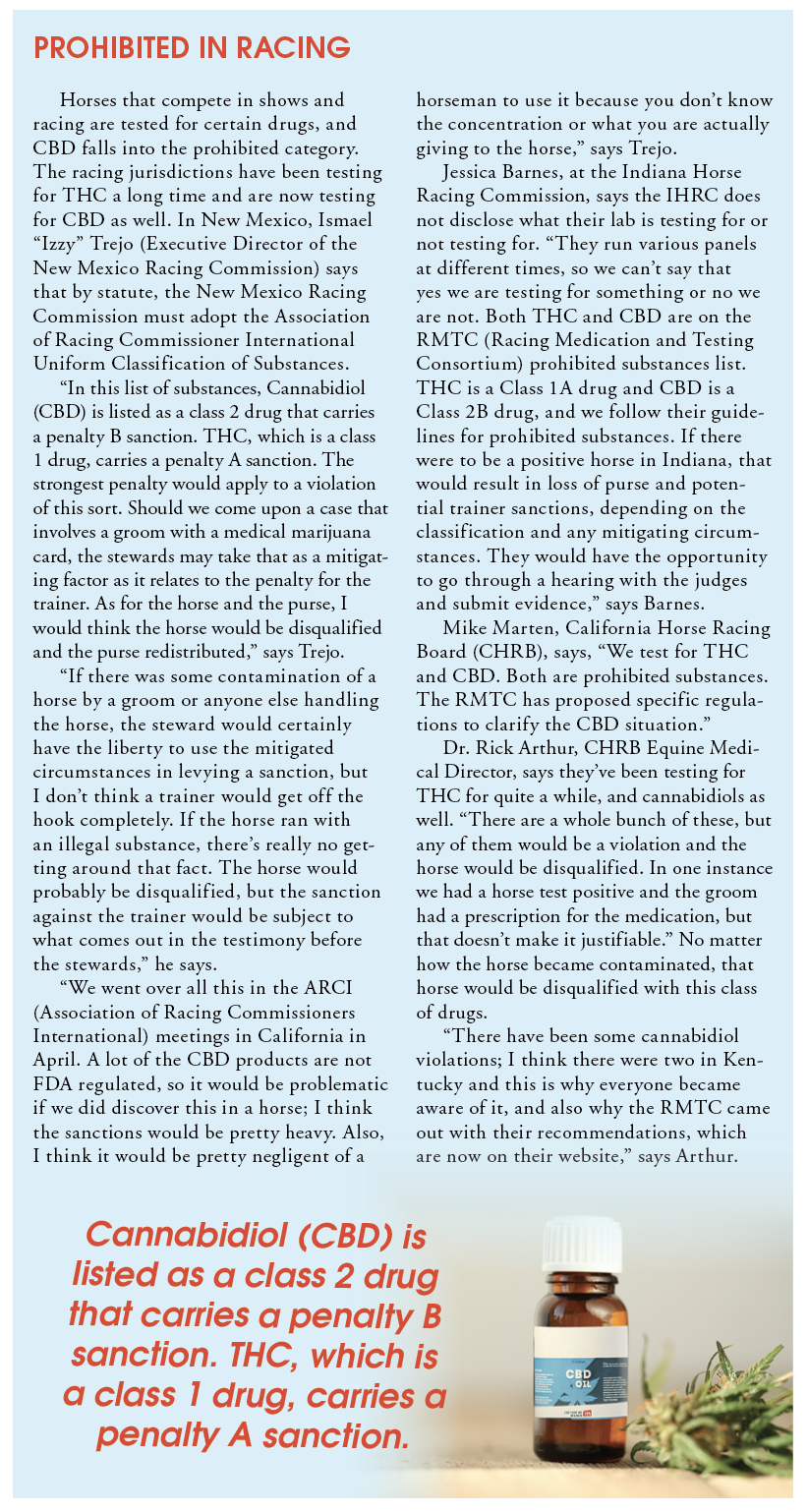 Product Inconsistencies and Safety Issues
Product Inconsistencies and Safety Issues
Some hemp oils have a broad spectrum of cannabinoids while others have no cannabinoids. “There are many ambiguities and marketing lingo in the hemp industry; consumers must do their own homework before buying a product. Always read labels and check the actual amounts of CBD in the bottle. Many labels just say 500 milligrams hemp oil, but that doesn’t tell you the actual concentration of CBD,” Luedke says.
People need to realize that hemp can sometimes be over 0.3% THC, especially when certain ingredients are extracted. “If you start with a plant that has 0.1% THC and extract part of that plant, the amount of THC might be ten-fold higher in the extracted portion because the extract is more concentrated. Then it is 1% THC, which is illegal.”
People buying cannabis products need to be careful. “Make sure the company creating the product has certificates of analysis (COAs) to show what is actually in that product. There are probably at least 16 different tests for things you would potentially look for, with the most important being potency. This would address the cannabinoid profile, making sure there are not high levels of THC. I think that if you had even 0.2% THC in a hemp product and were giving a lot of it to a horse, it would show up on a drug test. The drug test can pick up quantities in parts per million.” At VetCS, the manufacturing process uses fractional distillation and removes all the THC so the final product has zero percent THC.
“We know that CBD has some therapeutic properties and we need to figure these out, including safety issues and dosing ranges. We haven’t seen any adverse side effects with the doses we’ve been giving; these horses are closely monitored—assessing appetite, manure production, behavior, etc. When more numbers of horses are given a product, however, there may be more chance for side effects—if different interactions occur with medications they are on, or considering individual sensitivities, etc.”
Some individuals should not be given cannabinoids, and these include young animals and pregnant or lactating mares. “This would include any horses under a year of age because they are still maturing their own endocannabinoid system. It’s the same for young humans; if we interfere with their immature system with either synthetic or plant-based cannabinoids, we might possibly interrupt the maturation of their own ECS (endocannabinoid system),” says Luedke. Pregnant or lactating mares should not be given anything that has not been proven safe for the embryo, fetus or foal.
At this point there are still many gaps in knowledge, and a lot of confusion and misunderstanding about these products. “Today it’s still a little bit the Wild West regarding current products because there are no regulations; the FDA does not recognize them,” she says. There is minimal oversight or quality control and that leaves it up to consumers to do their homework and look at the companies’ COAs. If these are not posted on the company’s website, ask to see them.
Make sure the content corresponds with what’s stated on the label and that there are no contaminants. Checking for presence of residual solvents, pesticides, microbial contaminants and heavy metals is important. “Hemp absorbs and amplifies whatever is in the soil,” she says. “There may be pesticides, herbicides, etc., in those plants and those contaminants will be very concentrated in areas of the plant that we extract the cannabinoids from. It’s scary because this is such a new thing that people don’t know what to look out for. If the advertising sounds good, horse owners are likely to buy a product, but ultimately it comes down to lab analyses for that specific batch.
“That’s why every single label we send out has a lot number and expiration number and those can then be referenced to the COAs on each batch. This is important because some companies may only batch test one batch per year and batches may vary in what they contain. Also, because hemp farming was not legal until this past January, there’s a wide variety of different plants and biomass being marketed. You don’t know where it was grown, and it’s common to have extraction labs combine large batches of plants to be more efficient.”
The plants on the same farm can also vary greatly in their THC content from year to year, depending on growing conditions. “Therefore the most important thing is batch testing and making sure this information is available,” says Luedke.
Beth Coney, DVM, has a practice in central Kentucky with racehorses and sport horses and does chiropractic and sports therapies and a little sports medicine. She says there are a number of products now available that contain CBD, and these are considered nutraceuticals. “This means they are not food and they are not drugs and therefore they are not controlled by the FDA. There is no guarantee that what you purchase has accurate labeling.” You are on your own, and it’s truly buyer beware.
“These products are being used for chronic pain, and there have been studies in dogs that show CBD can help control arthritis pain,” Coney explains. “The problem in looking at these studies, however, is that a study might have been done with one particular product, and other products may be very different. We don’t know how much CBD is in any particular brand.
“In veterinary medicine, we have not yet done the necessary research to establish what the effective doses might be, how quickly the CBD is absorbed, or how long it lasts in the body.
“Effective dose must be established, along with any side effects, and what doses are ineffective and what is an optimal dose,” she explains. “Studies can be done on various products, but we need to have an established, consistent product (always containing the same amount of active ingredient). That’s the trouble with nutraceuticals; it is difficult to have a consistent product.
“Horse owners also can’t be absolutely sure that the CBD product they purchase doesn’t contain minute traces of THC, which is a prohibited substance. There are anecdotal reports that CBD has efficacy for certain conditions, but it won’t be legal for horse owners to use during or before competition unless and until we are able to establish the pharmacology. If people want to experiment with CBD for an old retired horse in their back yard that is never going into competition, that’s fine. They should discuss it with their veterinarian, who could assess the horse objectively to make sure the animal has no conditions that indicate it should not receive the product, and that the animal is appropriately monitored to see if there is any change, and to make sure the horse’s blood work and chemical panel remain normal.
“Don’t assume that just because it’s from a plant that it’s safe,” she says. Anything that has a pharmacologic action, has the possibility of negative effects. Also, every individual (horse or human) is different in how it handles or tolerates certain drugs or products.

